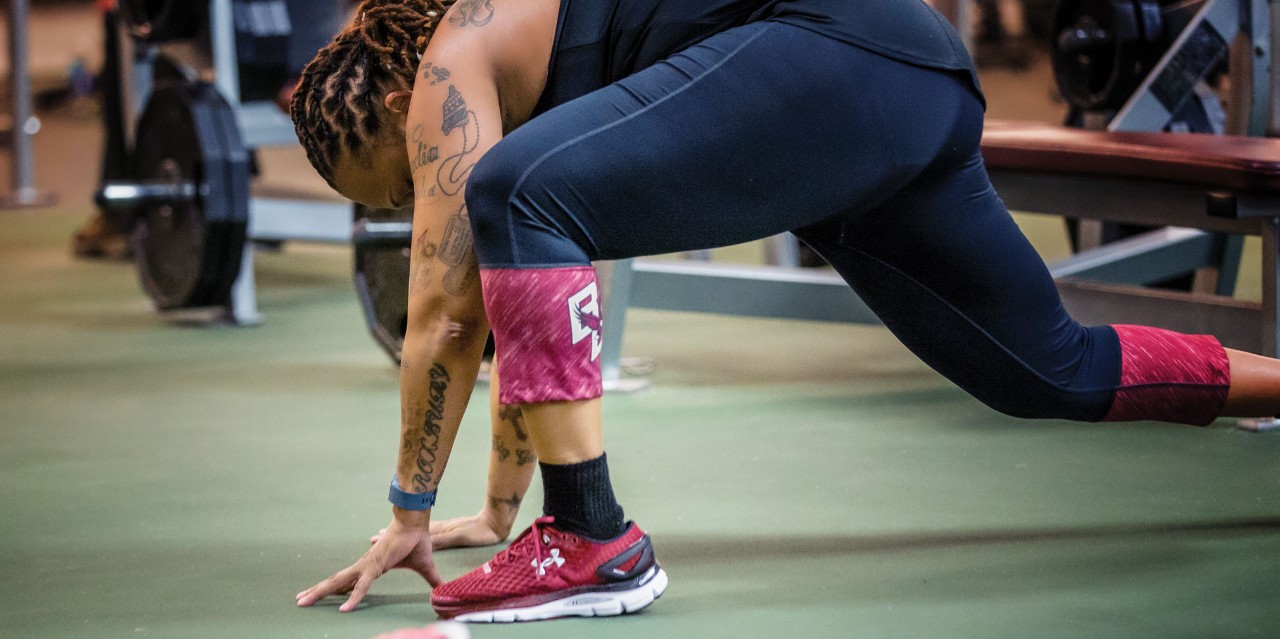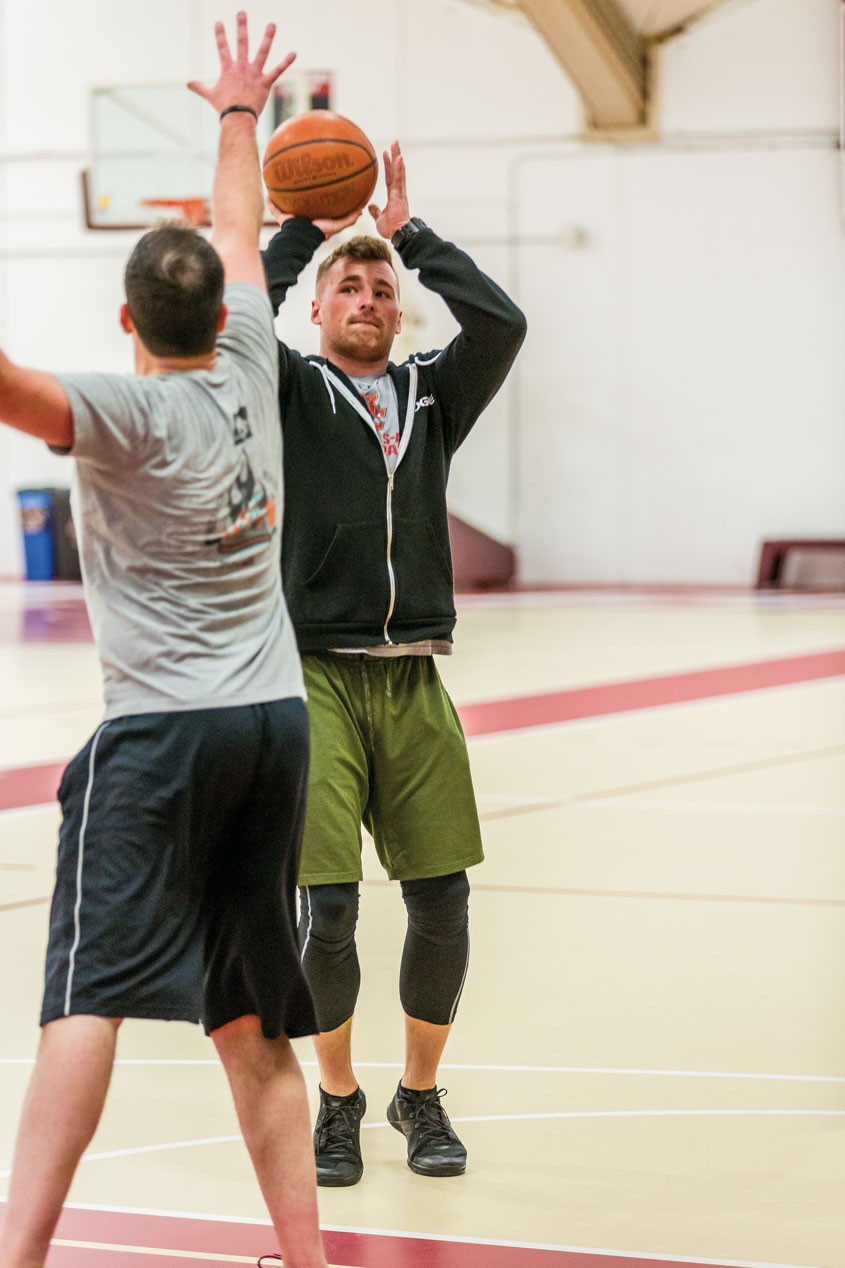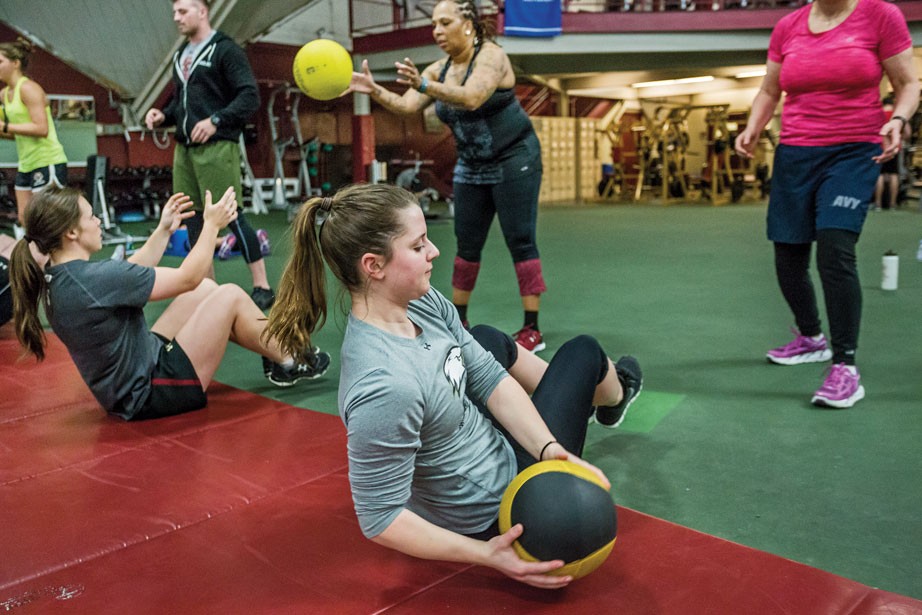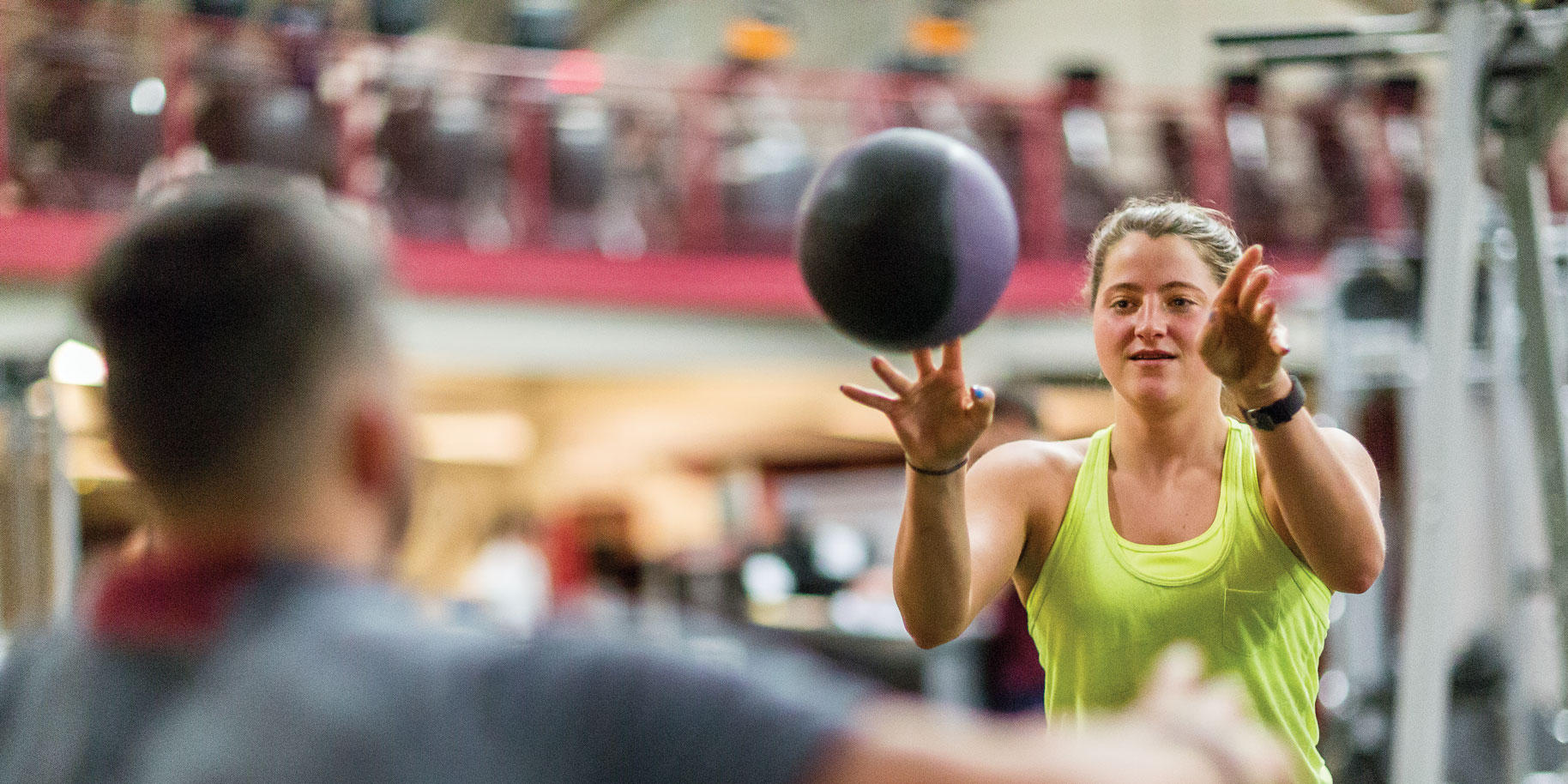Four years ago, while she was teaching at Uniformed Services University of the Health Services in Bethesda, Maryland, Susan Sheehy ’69, Ph.D. ’10, met an Afghanistan War veteran about to head home after two and a half years of medical care at Walter Reed National Military Medical Center. Yet the young man, a double amputee, was not excited to go, she recalls. At Walter Reed, he explained, he and the other vets understood and encouraged each other. But back in his small Arkansas town, he’d likely be pitied.
“He asked, ‘What’s going to happen to me?’” says Sheehy, a former Army nurse who served at U.S. military hospitals in Germany during the Vietnam War. “And that just haunted me. Every day, it was on my mind: What’s going to happen to him and all these warriors when they go home?”
Last summer, Sheehy returned to the Connell School of Nursing as a visiting scholar to work with Professor Ann Wolbert Burgess on an answer to that question. They’ve identified one in a first-of-its-kind health and fitness program that brings together veterans and college athletes. In January, they launched “The Collegiate Athlete Warrior Initiative,” a 12-week pilot program that matches veterans of the Iraq and Afghanistan Wars with Boston College student-athletes for rigorous workouts that are developed and overseen by a former Olympic trainer. Twice each week, the vets also participate in hour-long workshops that emphasize nutrition, stress management, and wellness, as well as general-interest talks on everything from Shakespeare to public speaking, led by Boston College faculty.

A veteran works out in Boston College's Flynn Recreation Complex
The program, says Burgess, returns veterans to a structured regimen and supportive community while addressing the complex health challenges—such as disability, weight gain, and sleep disturbances—that can affect their transition to civilian life.
Its goal is to get veterans “back on a healthy track,” says Sheehy. “But we’re not just giving them workouts—we’re supporting a whole lifestyle that they can continue on their own.”
From January through April, the program enrolled four veterans and four student-athletes from Boston College’s football, swimming and diving, field hockey, and softball teams. The pairing of soldiers and student-athletes, says Burgess, is “a natural” for several reasons. Both are young (the average age of a soldier wounded in post-9/11 combat is 22 years old, according to the Veterans Administration); both have achieved high fitness standards; and both are used to working out in groups. The veterans, Sheehy adds, “don’t want to be babied. When they work out with a Division I athlete, they get a workout buddy who can challenge and motivate them.”
The yearlong initiative is funded by a grant from the Wounded Warrior Project, a nonprofit for veterans injured in post-9/11 military action. Sheehy and Burgess worked closely with the organization to design the program and establish physiologic benchmarks for the veterans. Since its launch, they’ve collected data on the veterans’ progress, which will become part of a research study to assess the program’s effectiveness. Burgess, an internationally recognized expert on trauma and the study’s principal investigator, hopes to enroll at least 26 more veterans over Boston College’s summer session and fall semester, with an eye toward rolling out the program to other colleges and universities later this year.
“We’d really like to see nursing take this on across the country as a service to veterans,” she says.
The Warriors’ workouts
Last fall, Hutsick and Sheehy met with Col. Paul Lewis, a nurse researcher specializing in soldier wellness at Fort Bragg, North Carolina, to develop the program’s workout regimen and set up its benchmarks. Each workout includes:
* 10 minutes of warm-ups
* 35 minutes of strength and conditioning training, such as weights and body-resistance exercises, and
* 30 minutes of a cardiovascular activity of the vets’ choosing—usually walking, running, stationary bike, the elliptical machine, or competitive games of basketball and volleyball
To accommodate the veterans’ physical limitations and medical conditions, Hutsick modifies the workouts as needed. The vets then complete at least two “more flexible” workouts on their own each week.
The Wounded Warrior Project fiercely guards the privacy of its veteran participants, and none of the four (two men and two women) who trained and worked out at Boston College during spring semester could be interviewed for this article, nor could their faces be photographed.
Sheehy recruited the veterans through the VA Boston Healthcare System, the Woods College of Advancing Studies at Boston College, and the Boston College Athletic Department, which invites veterans involved with the Wounded Warrior Project to campus for sporting events.
Burgess tapped the four student-athletes—Timothy Joy ’16, Leah Settipane ’16, Megan Cooley ’17, and Kelsey Golden ’18—from a forensics course she taught last fall at the Connell School and through the Boston College Athletic Department. (Burgess also taught a new course, Warriors in Transition, which covers U.S. military history and the effects of combat, during the spring semester.) Before pairing each student with a veteran, she and Sheehy held an orientation to familiarize the athletes with the culture of wounded soldiers, the effects of deployment, and the goals of the program. As volunteers, the students can count this experience as part of the University’s service learning initiative.

Joy, a marketing major and linebacker for the Eagles, reports he felt a personal connection to the project: he has a cousin who did three combat tours in Iraq in the Marines and suffers from severe PTSD as well as several friends who were in the military and deployed to Iraq or Afghanistan and now have PTSD.
“These people have gone through things that we can’t even imagine,” says Joy. “When I heard about the program, I had to help out.”
Each Tuesday and Thursday morning, the veterans and athletes work out together for 75 minutes at the Flynn Recreation Complex on campus. Maria Hutsick, a former head trainer for the U.S. Olympic Women’s Ice Hockey Team and currently a trainer at Medfield High School in Medfield, Massachusetts, leads the group.
Settipane, a communication major who holds the Boston College record for the most wins by a field hockey goalie, says that exercising together quickly sparked a sense of camaraderie among the veterans and students. “Once we got into the workouts,” she reports, “it became really easy to communicate with each other and everyone just opened up.”
Joy agrees. He says that, while he doesn’t ask about his partner’s wartime experiences, “if he wants to share them, then I am there to listen.”
To monitor the veterans’ progress, Sheehy records their weight each week, and every other week she measures their body mass index; fat, muscle, and water percentages; and visceral body fat using a special digital machine that analyzes body composition. For their own information, the veterans also document their calorie intake, sleep hours, and steps per day through Fitbit activity trackers.
The Department of Veterans Affairs estimates that 80 percent of U.S. veterans are overweight or obese. As a result, reducing body mass index (BMI) and visceral body fat percentage is the program’s highest priority, says Sheehy. Over the three-month period, she hopes to see each of the veterans reach a body mass index of 25 or less (an ideal BMI is between 18.5 and 24.9, according to the Centers for Disease Control and Prevention) and a visceral body fat measurement of 10 percent or less (between six and 12 percent is considered healthy, reports Sheehy).
Each week, the veterans also complete a Beck Depression Scale, a 21-question survey that measures their depression levels. And they keep journals to record their moods and levels of pain and fatigue. Among the information that Burgess is studying in these “soft measures,” she says, are indications that the veterans are “adding new and positive things to their life—friends, volunteering, social activities.”

Ultimately, the Collegiate Athlete Warrior Initiative will function as a “standardized template” that other colleges and universities can adopt with their own student-athletes and faculty, according to Sheehy. She says physiologic measurements collected from affiliate programs will be added to a database overseen by a consortium of the participating schools. (Eight colleges and universities in the U.S. and three in the United Kingdom have already expressed interest in starting programs, she adds.) She and Burgess are currently applying for additional grants to fund the program’s expansion.
Burgess and Sheehy say they will follow up with the veterans enrolled in the Boston College program at six and 12 months to see how they’re doing on their own. The student-athletes also plan to stay involved. Sheehy reports that Golden, a diver on the swim team, and Joy have offered to work with the next cohort of veterans. Joy, who had enlisted in the Army before this program began with an interest in joining the Green Berets, says that he hopes to stay in touch with his current workout partner, a former Green Beret medic, to learn from his experience and follow his progress.
“We all have one goal,” says Joy, “and that’s to help these vets get better.”
A whole-body approach
Following their Tuesday and Thursday workouts, the vets take part in a wellness program. Its aim: to improve their mental health and overall quality of life, says Burgess.
The workshops are arranged to cover 12 areas of wellness, including nutrition, sleep, relationships, and communication. Speakers for the Tuesday workshops include Professor of Communication Stacy Schwartz, who is also a health and nutrition coach, on curbing food cravings; O’Connor Family Professor Michael Pratt of the Boston College Carroll School of Management on finding meaningful work; and Connell School Associate Professor Judith Shindul-Rothschild on practicing self-care to improve mental health.
Burgess had originally planned to conduct a traditional support group for the Thursday programming. However, several veterans told her during interviews for the program that they “didn’t want to sit around and talk about war,” she says. As an alternative, Burgess put together a “Lunch & Learn” series in which faculty from different Boston College schools speak about an area of expertise that’s applicable to the veterans’ personal or professional lives, or in some cases, a topic that’s simply “unexpected,” says Burgess.
For instance, Morrissey College of Arts and Sciences Associate Dean Rory Browne, an international expert on zoos, discussed 21st-century animal conservation; Lynch School of Education Professor Emeritus John Dacey led an exercise on finding out if you’re creative; and Associate Professor of English Caroline Bicks applied excerpts from Shakespeare’s plays to everyday life.
The talks, Burgess explains, “help veterans to focus in, ask questions, and learn something new.”
—Alicia Potter, photographs by Caitlin Cunningham



